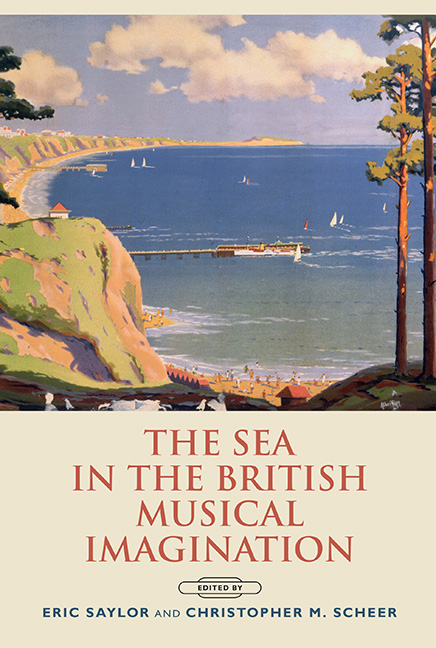12 - ‘Close your eyes and listen to it’: Special Sound and the Sea in BBC Radio Drama, 1957–59
Published online by Cambridge University Press: 12 June 2021
Summary
PRIOR TO THE mid-twentieth century, British artists’ depictions of the sea spanned a host of contradictory metaphors. The sea could represent danger, instability, or ‘rudderlessness’, a depiction traceable at least as far back as Shakespeare's The Tempest. Alternatively, the sea's apparent timelessness and impassivity effectively contrasted with humanity's own ephemeral and emotionally transitory nature. W. H. Auden, in his poem ‘Dover’, evoked this aspect of the sea when he observed how ‘the eyes of departing migrants are fixed on the sea, / conjuring destinies out of impersonal water’. For working-class Britons, the seaside was a locale for enjoying hard-fought leisure entertainment, of British-specific art forms such as the pierside music hall, Punch and Judy shows, and evening dance-band performances. For others, Britain's proud seafaring tradition represented a fundamental aspect of national identity. One very popular (if ‘pathologically conservative’) depiction of sea life was that of the stratified world of the battleship, as portrayed in films such as In Which We Serve (1942), in which the bold Sons of Albion reliably conquered the forces of evil. But as British art began embracing elements of Continental and American modernism in the early 1950s, new associations began to emerge that presented the sea as symbolic of humanity's engagement with modernity – particularly in ways that considered how Britain's diminished political and cultural status in the post-war world would affect that engagement. These new conceptions of the sea continued to stand alongside older meanings, however, forming a fascinating (if anarchic) semiotic jumble.
This essay will examine two radio plays produced by Donald McWhinnie – James Hanley's The Ocean (1958) and Samuel Beckett's Embers (1959) – that were contemporaneous with the genesis of the BBC's Radiophonic Workshop. Both plays feature the sea as the primary antagonist, and employed state-of-the-art technology to depict it in new and unfamiliar ways. In both works, the electronic representation of the sea reflects a desire to alienate, disorient, and distance the listener from normality, serving as a sonic analogue for the way in which the inescapable sea surrounds the main characters, either literally or symbolically.
- Type
- Chapter
- Information
- The Sea in the British Musical Imagination , pp. 251 - 266Publisher: Boydell & BrewerPrint publication year: 2015



